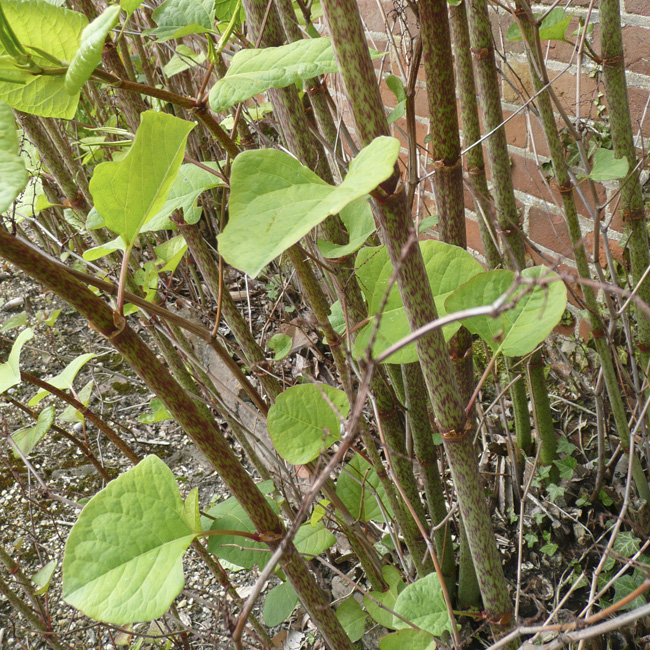Japanese Knotweed (fallopia japonica), aka Hancock’s curse, fleece flower or tiger stick in its native Japan, is a herbaceous perennial introduced to Britain in 1850 by the Royal Botanic Gardens at Kew (though some consider the Horticultural Society of London had samples by as early as 1825). Kew then sold it commercially and by 1869, it was commonly available – and widely used as cattle feed. Within 50 years, by the turn of the century, Knotweed could be found growing wild over a very wide area of the country. Since it is really quite attractive, many people grew Knotweed as a feature within country house gardens. It will thrive virtually anywhere, but it particularly flourishes adjacent to old walls with a south-westerly aspect, which retain heat and shelter the plant,. The good thing about this select situation is that the Knotweed is unlikely to spread very far as the micro environment is so ideal.
The Royal Horticultural Society refers to Knotweed as being a real thug, largely due to its ability to grow at an alarming rate and overwhelm virtually anything in its path. Knotweed does not produce viable seeds in the UK, but spreads through a rhizome (underground root-like stem fragments). It has a general appearance and height that is akin to bamboo with broad oval leaves. This invasive foreigner starts to grow in early spring and thrives in any type of soil, no matter how poor. It can grow as much as 20 centimetres per day and is considered a serious threat to bio diversity because it chokes native plants. With such an astonishing growth rate it can reach a height of 1.5 metres by May and 3 metres by June.
So, if you think you may have a Knotweed problem, this is what to look for. The Environment Agency lists Japanese knotweed characteristics as:
• produces fleshy red tinged shoots when it first breaks through the ground;
• has large, heart or spade-shaped green leaves;
• produces leaves arranged in a zig-zag pattern along the stem;
• has a hollow stem, like bamboo;
• forms dense clumps that can be several metres deep;
• produces clusters of cream flowers towards the end of July;
• dies back between September and November, leaving brown stems.
Some surveyors question whether the problem of structural damage is really as widespread as the media would have you believe. Certainly, Knotweed is extremely invasive and yes, it can cause damage. However, examples of structural faults directly attributable to Knotweed are relatively sparse when compared, say, to those created by willow. Is this perhaps another example of a problem which is over-dramatised, especially by those who are set up to treat it?
It is worth repeating however, that Knotweed grows very rapidly and is a pain to eradicate. Even if it is sprayed – and the soil subsequently removed – the probability is that enough minuscule parts of a rhizome remain in adjacent soil or wall for it to grow back again. Although it is held to be treatable, that has not prevented a number of lending institutions refusing mortgages where this pariah is present. If discovered, surveyors must mention it as a threat within their professional assessment. It is undoubtedly true that the presence of this thug creates a reduction in value of a residential property, in both reality and perception, although this element is extremely difficult to quantify.

